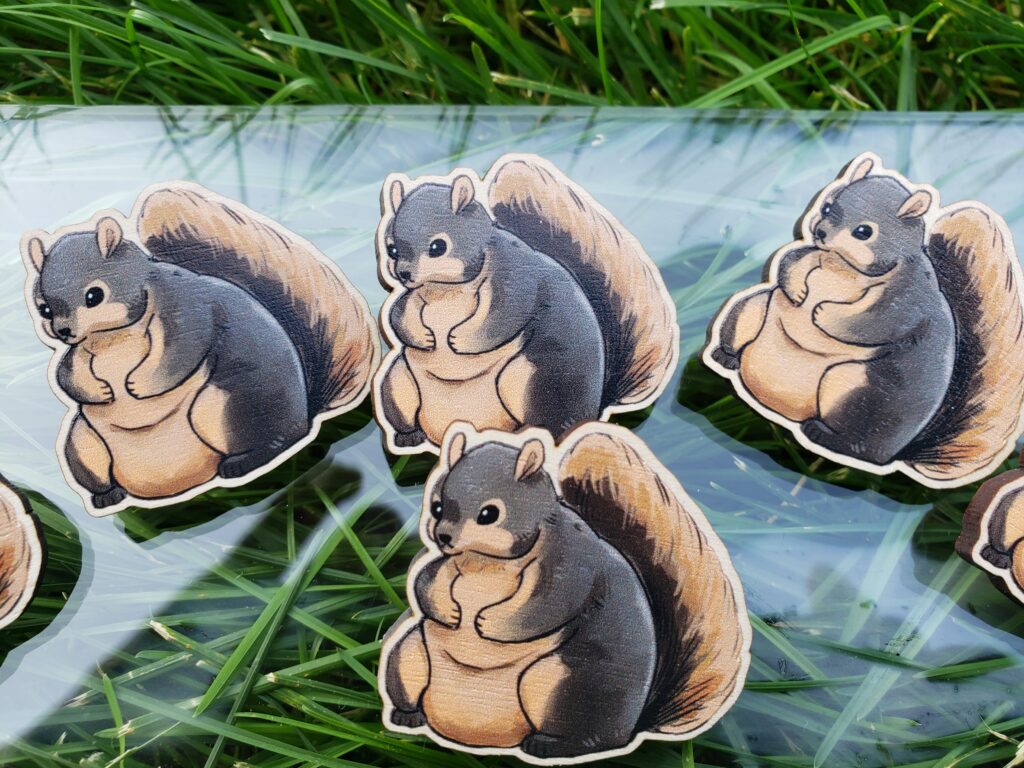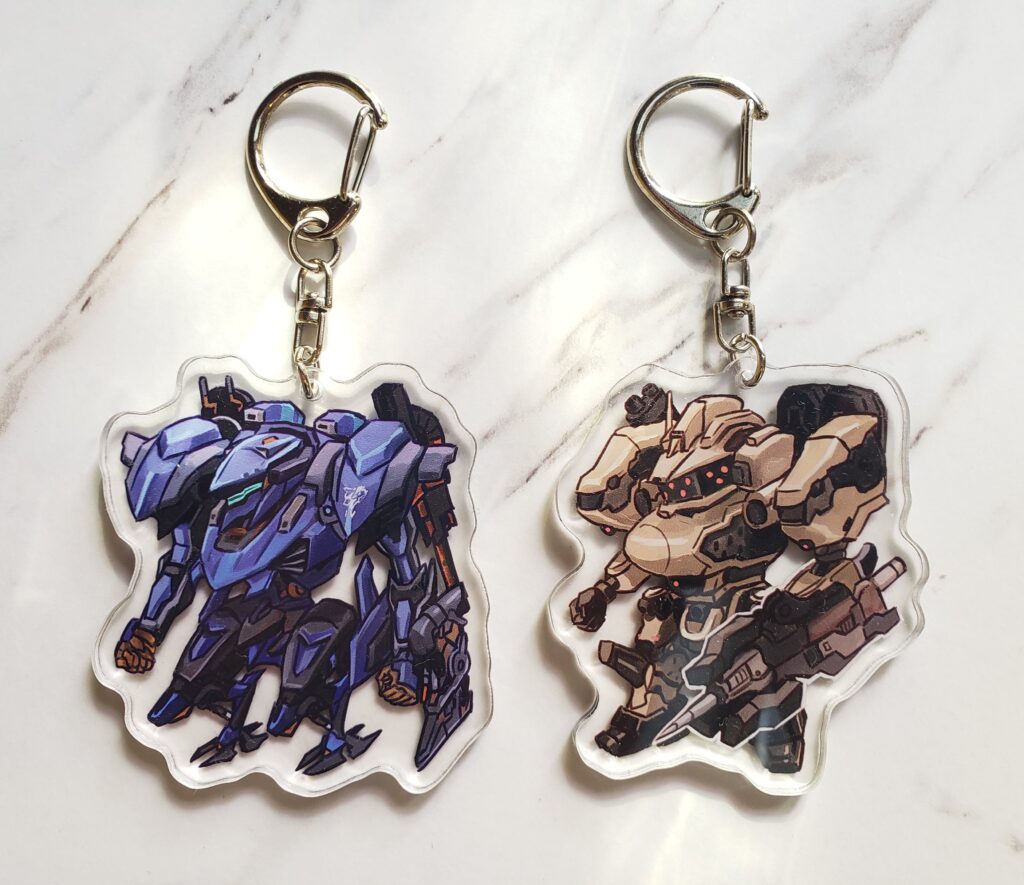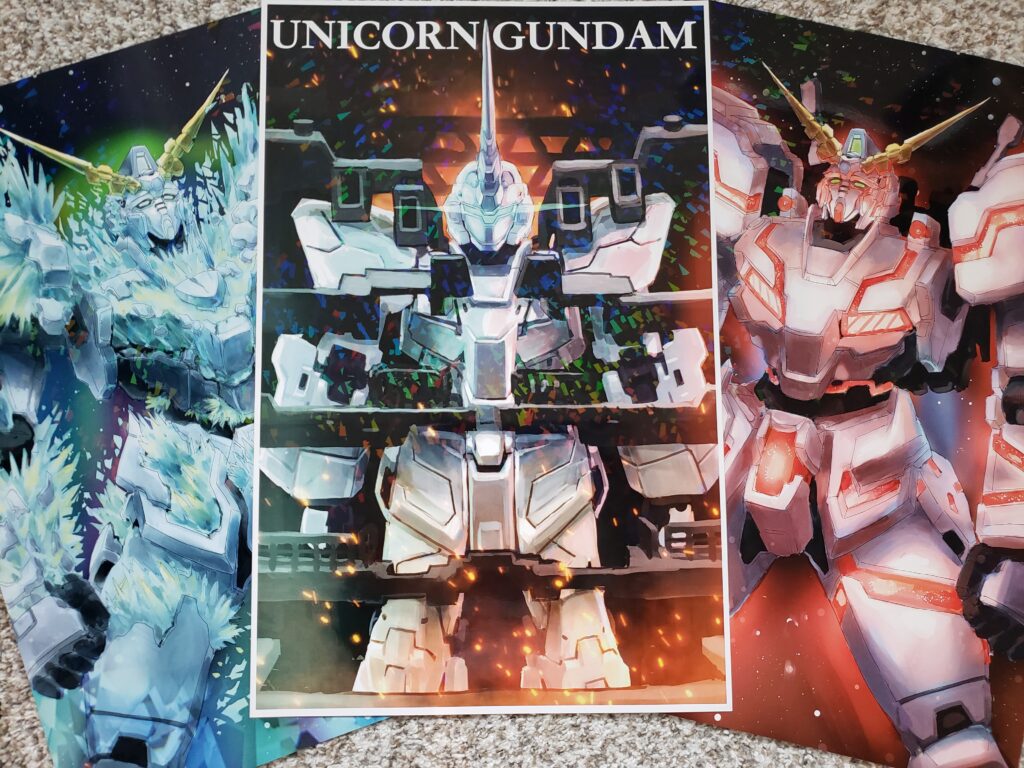Hello, and welcome back to another week of Industrious Illustrating! In previous weeks I’ve gone over profit margins and event types that artists can sell at. This week, I’m discussing a few different types of merchandise that I personally offer and their most common prices at pop culture convention Artist Alleys and online sales. Since this is another long post, I put my list underneath a Read More:
Read more: Industrious Illustrating #46 – Common Merchandise TypesStickers ($3-8)
I used to sell stickers, but I stopped because the thin profit margin wasn’t worth how much trouble it was to market and display them in exchange for enough money to maybe buy myself a single boba per sticker. Other artists see great success with selling large volumes of them or in addition to higher priced items though. It all depends on your business strategy!
Keep in mind that some event venues will outright ban stickers and other sticky-backed items (phone grips, window decals, etc.) because of potential vandalism.
Buttons/Pins ($3-$15+)
While buttons and pins are sometimes used interchangeably as terms, they describe different types of merchandise. Buttons are typically laminated paper pressed into a metal backing with a safety pin attached on the back to secure it to clothing or other soft materials. Pins are typically wood, acrylic, metal, or enamel with an attached pin post (shaped like a metal nail) and “clutch” (typically rubber or metal) to attach it to soft materials. Pins are also typically more expensive than buttons because of the higher production cost that comes from outsourcing them to a manufacturer rather than being able to mass-produce them at home using a button press. However, these two types of merch are oftentimes displayed together on table displays using corkboard, canvas banners, vinyl cubes, etc. Prices on buttons and pins vary a lot and are generally dependent on the production cost, size, materials, etc.
I currently sell some specialty buttons shaped like coffins or made of soft plush material and a few pins either made out of metal in the shape of a bottle cap or made of responsibly sourced wood. They’re not my bestsellers, but I’ll see how they’ll do over time as I accumulate more online sales and attend more events to sell my art.

Most of my coffin-shaped button designs

A wood pin I’ve made with a fat squirrel design.
Acrylic Charms ($8-$20+)
Acrylic charms are printed 2D artwork sealed within a (typically) laser-cut piece of acrylic cut to the artwork’s outline. The most common size of charm that I see is 2.5 inches with a clear border around the design and a hole in the top with a metal keychain clasp for hanging the charm on something else.
These typically sell for about $12-15, which may seem like a lot for such a small and simple item until you remember that acrylic charms are almost all produced in China (so, higher shipping costs than sourcing domestically like you can for prints) and are relatively sturdy and long-lasting compared to stickers or prints.
Larger charms and charms with special finishes/gimmicks such as holographic finish, foil accents, attached hanging acrylic pieces, special clasp designs, an internal compartment with shakable acrylic pieces, etc. can sell for a higher price, typically somewhere between $20-$30. Charms smaller than 2.5 inches can go for lower, typically somewhere between $8-$10. There’s also charms made of other materials such as metal, wood, PVC, and enamel, but they’re a lot less common than acrylic charms either for durability or cost reasons.
Charms sell best for me through online sales compared to other merchandise types. I assume this is because charms take up less space and that the charms I offer are in a niche that doesn’t have many other artists making small merchandise (mecha/robots) even when compared to the broader internet.

Two recent acrylic charm designs I made that far surpassed my sales expectations when I listed them online
Prints ($10-$25+)
Prints without specialty finishes like holographic (rainbow crystal) laminate or metallic spot foil accents are fairly cheap to produce, totaling about 1 dollar per print for 11×17 inch prints and even lower for smaller prints like 8.5×11″ or 4×6″ prints. Their high price point compared to their production cost comes from the length of time a typical print artwork takes compared to smaller merchandise with simpler designs, and also their relative large size compared to other forms of cheap-to-produce merch such as stickers and buttons. This still means that their profit margins are much better compared to other merchandise types, which also means that competition in the print-selling market is extremely competitive, especially in Artist Alley.
The most common prices I see for common print sizes at pop culture conventions is $10 for 4×6/5×7 prints, $15 for 8×10/8.5×11″ prints, $20-$25 for 11×17/12×18″ prints, and much higher for anything larger. Specialty finishes up the prices per print size by at least $5, though in my experience customers are willing to pay an additional $10 or more for a special shiny-looking print. However, these prices are actually relatively low compared to how much fine artists charge for prints at fine art events, as the typical attendee there is expecting higher prices compared to the average anime or comic con attendee.
My best-seller at cons is by far prints, though prints also account for a majority of the merchandise that I offer in the first place.

Examples of holographic finish prints that I sell online and at my Artist Alley table
Apparel ($20+)
I don’t personally sell apparel because of the high cost per unit (at least $10 per printed shirt) and the amount of stock I’d have to order for sizes S through XL without knowing if it’d actually sell, but there’s some artists who sell shirts or sweaters either printed on by a third-party manufacturer or that they screenprint on themselves. There’s a decent amount of potential money to be made by selling apparel since it’s not a common Artist Alley item and a lot of customers see appeal in functional items, but it also takes up a lot of storage space (a problem especially for weight restrictions on flights for faraway events) and you end up having to compete on price with fast-fashion corporations who can afford razor-thin profit margins far more than an independent artist can.
Other merchandise?
Keep in mind that this list is far from exhaustive and that there’s lots of other things that you can either create yourself or get your art printed on! This is just meant as a quick introduction/overview of commonly sold merchandise types in the specific type of small art business that I currently work in.
Remember that the advantages of selling mass-produced merchandise based on an original drawing instead of focusing on selling one-of-a-kind original art pieces are that you can reuse your designs infinitely and across various types of merchandise to potentially make lots of sales across a long period of time from a few hours of labor. Your budget and time are the true limiting factors when it comes to what kind of merchandise you can create and offer as an independent artist!
Anyway, Motor City Comic Con is next weekend (November 10-12), so I’m waiting on several merchandise orders to ship in ahead of that con. I’ll be debuting new merchandise like rubber deskmats and double foil prints to experiment with what my customer base likes best, and I’ll be sure to write a column after that convention talking about how my first comic con tabling experience went!
















